Trekking to Everest Base Camp is one of the most rewarding experiences of my entire life. From the moment I stepped off the eight-seater airplane at Lukla airport into the crisp Himalayan air, I knew I was in for the adventure of a lifetime. If you’re on the fence about embarking on the trek, my advice to you is “BOOK IT AND GO!”. But I understand that there are many anxiety-inducing logistics to navigate before you can set out on your hike.
Never you fear! I am here to answer some of your burning questions.
This guide will cover everything you need to know about Trekking to Everest Base Camp – from logistics about the hike itself, to booking accommodations, to hiring porters and guides and, the most important question of all, what you can expect to eat.
Let’s dive in.
What is the altitude at Everest Base Camp?
Everest Base Camp sits at over 17,500 feet (5,364 meters) – the highest base camp in the world. Notably, Everest Base Camp is snuggled into a valley. You will descend to it along your trek. This means that the actual Base Camp trek hits altitudes higher than 5,364 meters.
If you are trekking, you may choose to hike to Kala Patthar to get an even better view of Everest. Kala Patthar sits at over 18,500 feet (5,644 meters). It is the tallest point on the Everest Base Camp Trek, and the highest you can climb without specialized climbing permits.
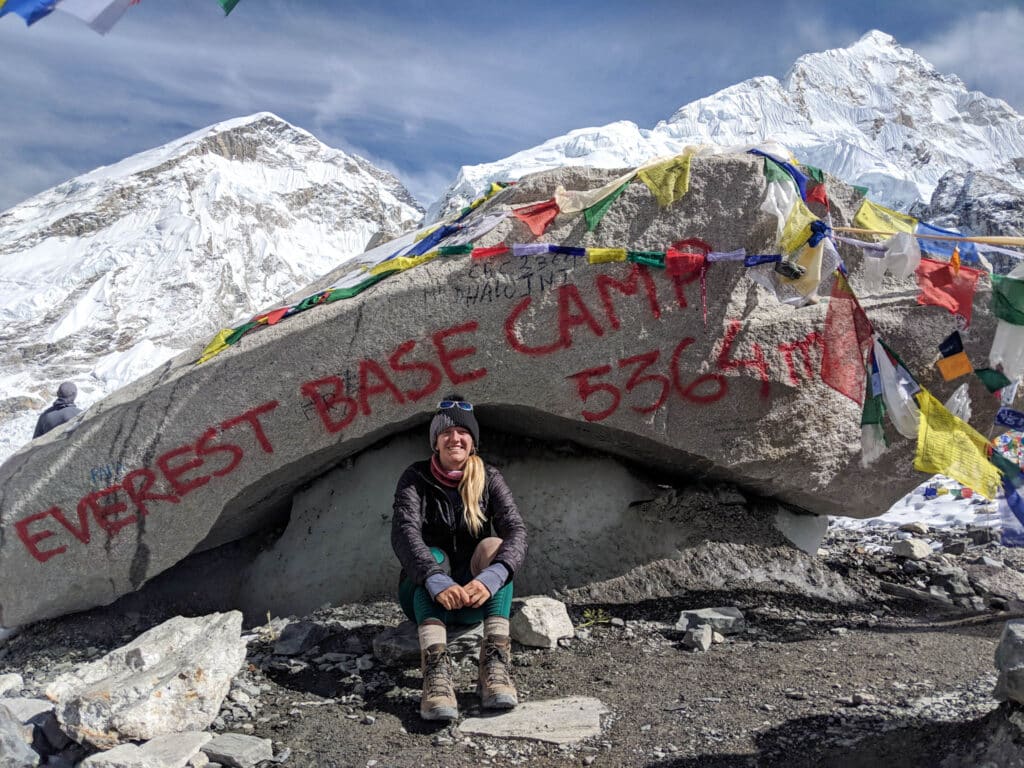
How long does the Everest Base Camp trek take?
The Everest Base Camp trek takes roughly 12-14 days to complete, depending on how quickly you want to go. Eight days are typically required for the ascent, and two “rest” days are added to the itinerary to acclimate to the higher altitudes. Only four days are required for the descent, as you can go much faster on the way down.
How much does the Everest Base Camp trek cost?
The total cost of the Everest Base Camp can range anywhere from $500 to $3,000 not including flights to Nepal. The actual amount you spend will depend on a few key considerations:
- Whether you opt to trek with a tour company
- Whether or not you hire porters or guides
- How much you spend along the route on food, accommodation, and souvenirs
Typical guide & porter cost breakdown
- Trekking with a tour company (international or Nepal-led) – $1,500 – $2,500 USD
- Trekking independently, but hiring a guide and porter – $1,200 – $1,500 USD
- Trekking independently, but hiring a guide – $800 – $1,200 USD
- Trekking independently, but hiring a porter – $600 – $800 USD
- Trekking independently, no guides or porters – $400 – $600 USD
Typical cost of other Everest Base Camp essentials
- Average drink (tea): $0.50-$2 USD
- Average meal: $3-$9USD
- Average accommodation cost: $4-8 USD (included as part of trekking tour)
- Average shower cost: $1-3 USD
- Average wifi cost: $4-9 USD
- Average charging cost: $0-3 USD
- Flight to Lukla – $150-$300USD (included as part of trekking tour)
- Park Permits – $40-$50 USD (included as part of trekking tour)
Note: Essential items like toilet paper and water bottles become increasingly more expensive as the trek continues to higher altitudes. At high altitudes, like Gorak Shep, a bottle of Coca Cola can run you $7 USD. Plan ahead and purchase items that you need at lower altitudes.
Note: The currency of Nepal is the Nepalese Rupee. Along the route, you will have to pay for items in cash – so it is important to pack the amount you think you will need before leaving Kathmandu. Do not rely on ATMs along the trail, as they are few and far between.
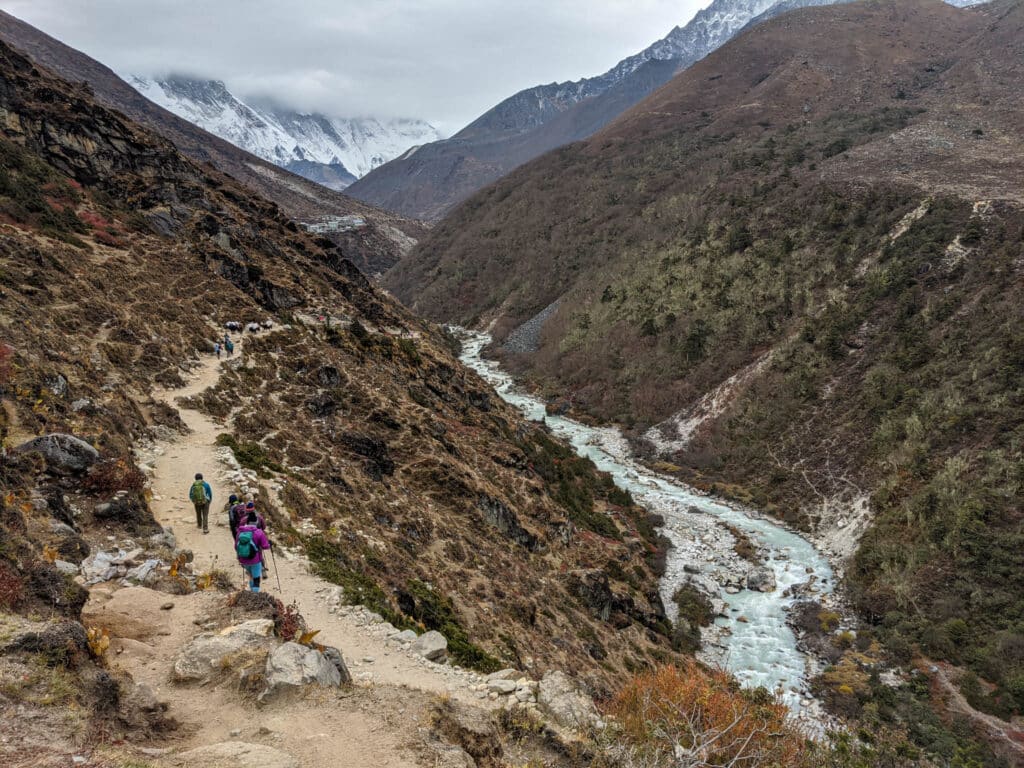
What time of year should I do the Everest Base Camp trek?
Trekking to Everest Base Camp during peak season
The peak seasons for the Everest Base Camp trek are Spring (March, April, and May) and Autumn (October and November). Trails are the busiest during these seasons, but it is also your best chance to get good weather and clear skies. May is the peak climbing month for climbers attempting to summit the top of Everest. As such, trails will likely be the most crowded and securing accommodation can be challenging.
Trekking to Everest Base Camp in winter
Trekking to Everest Base Camp in winter (December through early March) is certainly doable, but you should anticipate and prepare for extremely cold temperatures. Tea houses are not insulated, so a four-season sleeping bag is a necessity. You should also prepare for snowfall, as this might impact the routes you can take along the trail.
Trekking to Everest Base Camp in summer
Trekking in summer (June, July, August, and early September) is monsoon season in Nepal. Expect a lot of rain, muddy trails, and potential mudslides in the mountains. Furthermore, lots of rain brings lots of clouds. Cloudy skies can not only disrupt your views of the mountains, but might even make it impossible to get to the trailhead in the first place since flights to Lukla only occur when skies are clear.
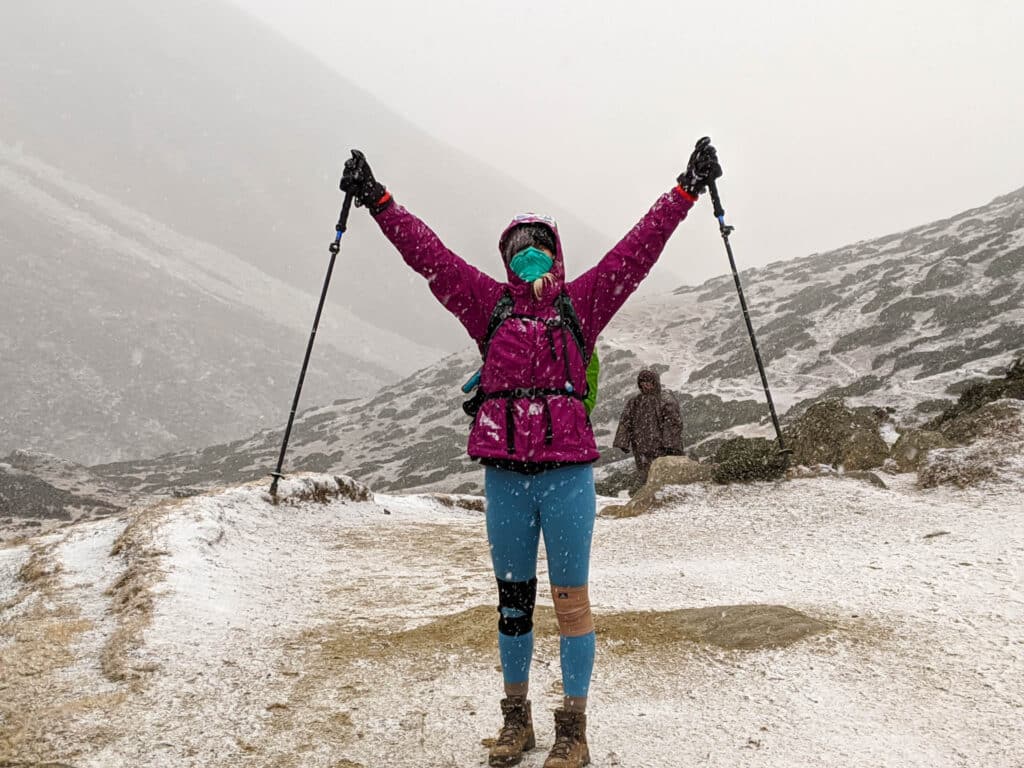
How difficult is the Everest Base Camp trek?
The Everest Base Camp trek is moderately difficult. It is basically one, very long, trek at high altitude. There is no technical climbing experience is required for the Everest Base Camp trek, so you can put away your ice axes and crampons! Before embarking, you should be sure you can walk great distances – sometimes up to eight hours per day – for roughly 12 days straight.
The most difficult aspect of the Everest Base Camp trek is altitude. Nearly everyone experiences some form of altitude sickness on trail – pounding headaches, congestion, nausea, etc. There’s no telling when altitude will hit ya, so be sure to pack lots of Advil and guzzle as much water as possible.
Is the Everest Base Camp trek safe?
Short answer is: yes! The Everest Base Camp trek is well walked, well marked, and generally very safe. The main danger of the trek is altitude. Trekkers spend a significant portion of the trek above 500 meters, which opens up opportunities for AMS (acute mountain sickness), altitude-related edemas, and other ailments. It is important to monitor for severe symptoms of altitude, and descend.
If you are trekking alone, it is also important to know the routes. At higher altitudes, the trails become more remote, and it is possible to wander off the grid and get lost – a huge danger in a massive national park.
Check out my Everest Base Camp safety guide and my Everest Base Camp altitude guide for more information.
What should I pack for the Everest Base Camp trek?
With great adventure comes great planning. As such, it is of the utmost importance that you are intentional with your packing list to ensure that you are prepared for everything ahead.
Check out my complete Everest Base Camp Packing Guide for a full breakdown of what to bring.
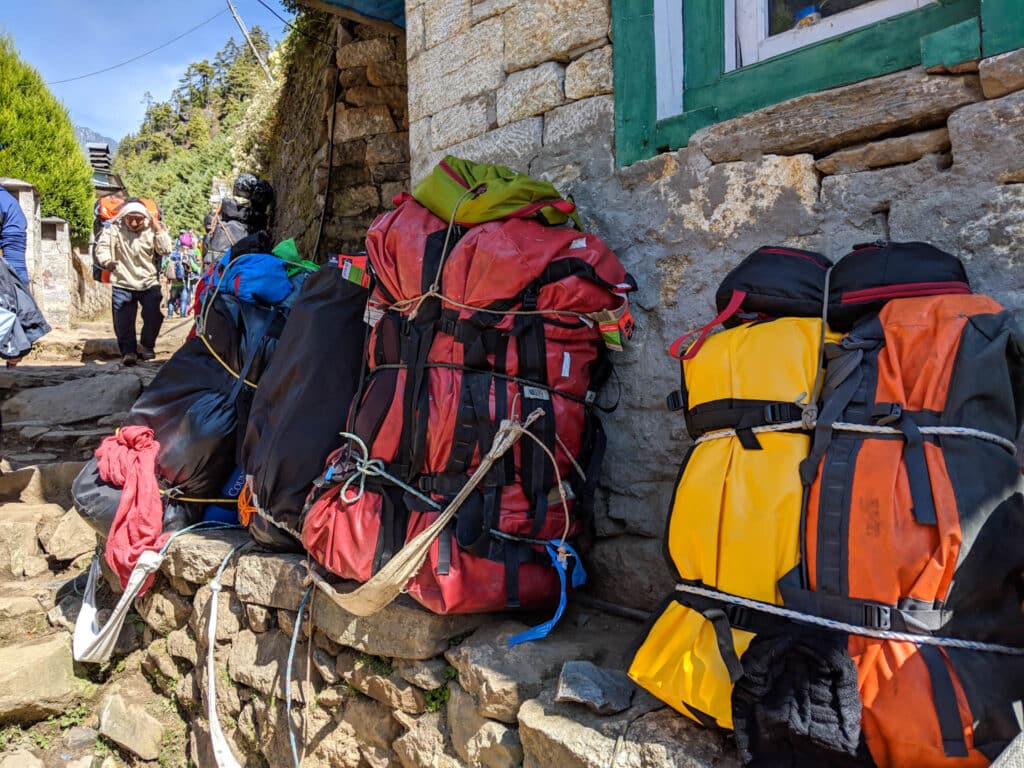
What route should I take to get to Everest Base Camp?
Nepal’s Khumbu region is peppered with villages and towns with accommodations, or “tea houses”. The route you take to base camp needs to be centered around these towns so you are sure to have somewhere to sleep at night. When choosing a route, plan to travel from one town to another, and make sure the distance is attainable.
It is essential to build in acclimatization days – which basically means spending two nights in the same town to allow your body to adjust to the higher altitudes. It is also crucial to not ascend too quickly.
All routes begin and end in Lukla where the airport is located. Below is the route we took to Base Camp. Note that these are the towns that we spent the night in. We stopped at many more throughout the trip for tea, meals, and breaks.
- Lukla
- Phakding
- Namche Bazzar (2 nights)
- Phortse
- Dingboche (2 nights)
- Loboche
- Gorak Shep (Base Camp Day!)
- Somare (between Dingboche and Pangboche, which are both larger towns)
- Namche
- Lukla
If you are going with a guide or as part of a group, the itinerary will be pre-planned for you.
Check out my 12-day Everest Base Camp itinerary for a more detailed breakdown!
How do I get to the Everest Base Camp starting point?
You’ll need to book a plane ticket from your country of origin to Kathmandu, Nepal, the closest metropolitan city and international airport to the Base Camp Trek start. From there, you will need to make your way to Lukla, the starting point for the trek itself.
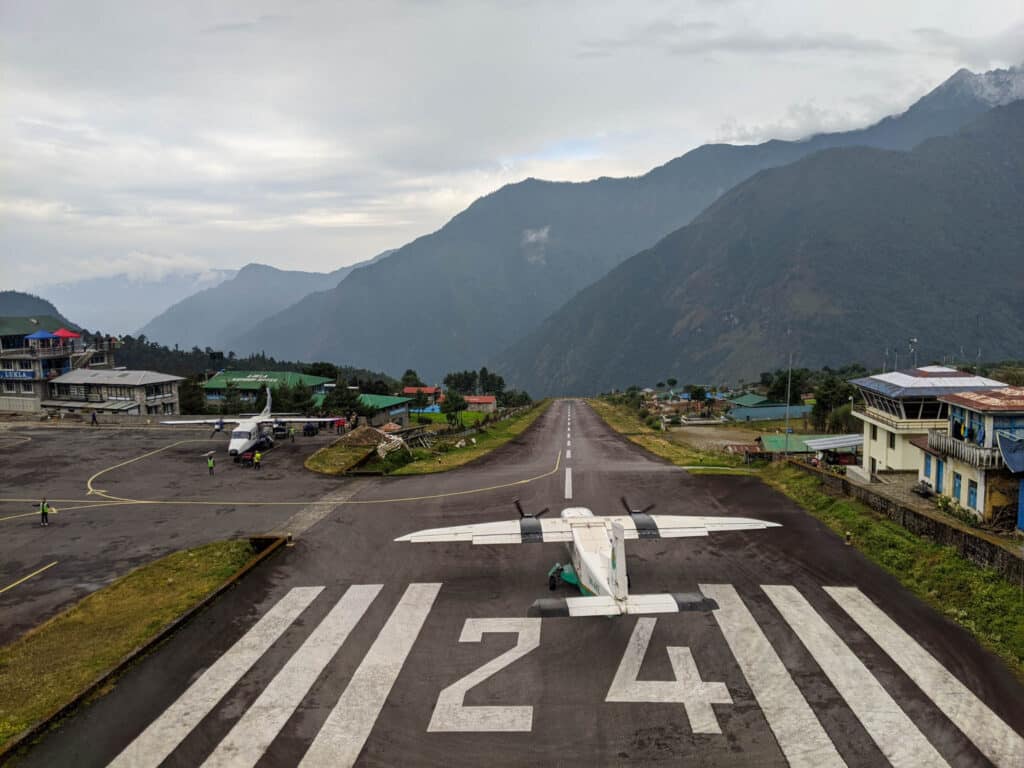
You can get to Lukla from Kathmandu in three ways:
- By Plane – This flight takes roughly 30 minutes, and is the most popular mode of transportation to the mountains. However, due to weather conditions, it is not uncommon for planes to remain grounded or delayed for one or more days.
- By Helicopter – Helicopter flights from Kathmandu to Luka take around 45 minutes on average, and are perhaps the most scenic mode of transportation to the mountains. They experience fewer delays compared to planes, however, they are quite pricey. Helicopters can cost upwards of $3,000USD to run.
- By Foot – There is no motorized road that will get you all the way to Lukla. If you want to add a few extra days to your trek, you can opt to travel by car to the town of Jiri, and hike the rest of the way to Lukla. While it is not traveled often now, this route was popular for mountaineers before the Lukla airport was constructed. Note that during rainy season, some of the roads may be flooded or impassible.
Your travel plans to Lukla are subject to change due to maintenance repairs, weather conditions, or other unforeseen circumstances. When I visited in 2019, the airport at Kathmandu experienced a closure. We drove six hours at 4am to reach the Ramechhap airport in the village of Manthali. Flights are often rerouted to Ramechhap during peak climbing seasons due to high volumes of trekkers, so be ready for last minute changes!
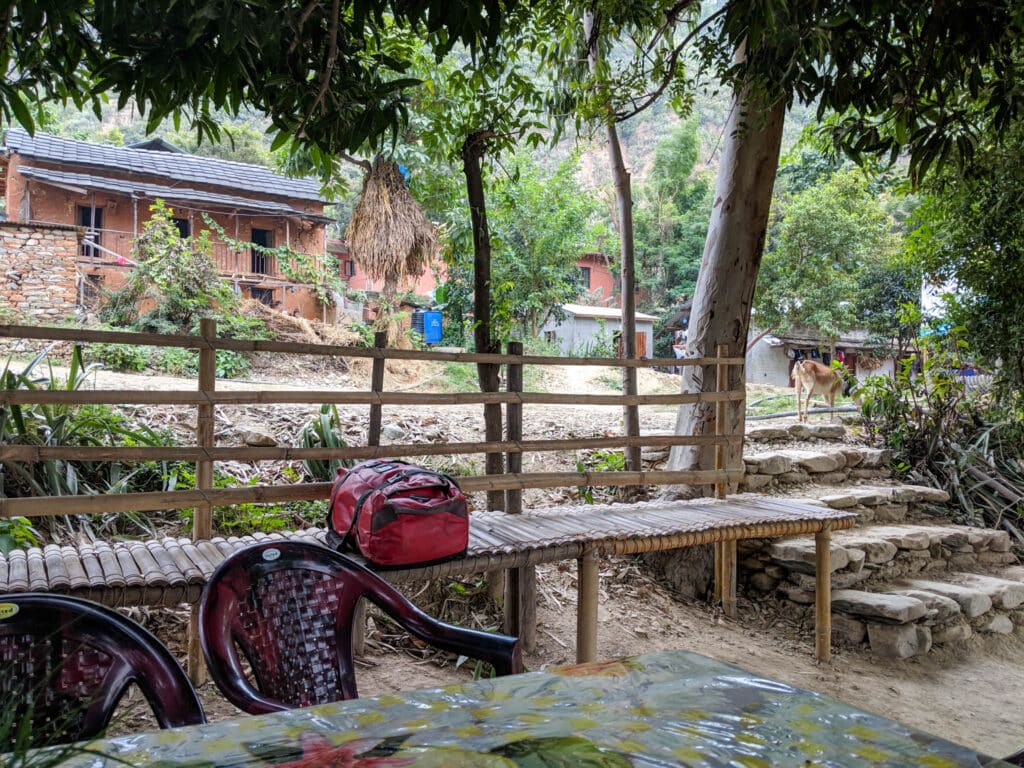
How do I hire guides and porters for the Everest Base Camp trek?
You can find reputable trekking companies online and in Kathmandu. If you travel with an agency or group, your guides and porters will be hired for you. I traveled with a group of four that booked through Intrepid Travels. It was a great experience, and nice to not have to worry about logistics. Below are a few trekking companies that are reputable:
- Intrepid Travel (this is the company I traveled with)
- Himalayan Wonders
- Mountain Sherpa Trekking
If you are traveling with a group, I highly recommend finding a group that is small. I saw groups of 15+ on the trail, and it was overwhelming. Smaller groups allow you to actually get to know one another, as well as your guides and porters. I found this to be one of my favorite parts of the experience.
If you are embarking alone, you may consider hiring a guide or porter for your trek via verified websites, or in Kathmandu or Lukla at a local travel agency. Always, always be sure to verify the credibility of the agency you are booking with before setting out. TripAdvisor is a helpful resource here.
Here are some things to look out for when hiring a guide or porter on your own:
- Credentials of the guide – make sure the guide you are hiring is certified. If you book through an agency, this is more likely. However, it could increase the cost.
- First Aid Certification – In case of emergencies, this is always a plus
- Insurance – Make sure the guide is insured, as this may come in handy if there is an emergency
Again, be sure to read reviews of the guide before taking off. And be sure to connect with the guide ahead of time to set expectations around itinerary and cost.
What is the difference between guides and porters on the Everest Base Camp trek?
Before you begin booking, let’s run through the differences between “guides” and “porters”. You may choose to hire either or both for your trek.
Everest Base Camp Guides
Guides are professionally certified and hired to show the route, set the pacing of the trek, book accommodations, and handle any logistical wrenches that are thrown into the mix (ex: planes being grounded at Lukla due to weather, managing park permits, etc). They typically have deep connections with local hotels, ticketing agencies, and permit offices. Guides are well trained in the route, and can help detect and monitor early symptoms of altitude sickness.
Perhaps the most valuable aspect of a guide is that they will help you understand the cultural significance and history of everything you see and experience along the route – as well as the stories about each of the mountains in the Himalayas. It cannot be overstated how important that is!
Guides typically cost anywhere from $25-$100 USD per day. This does not include tip.
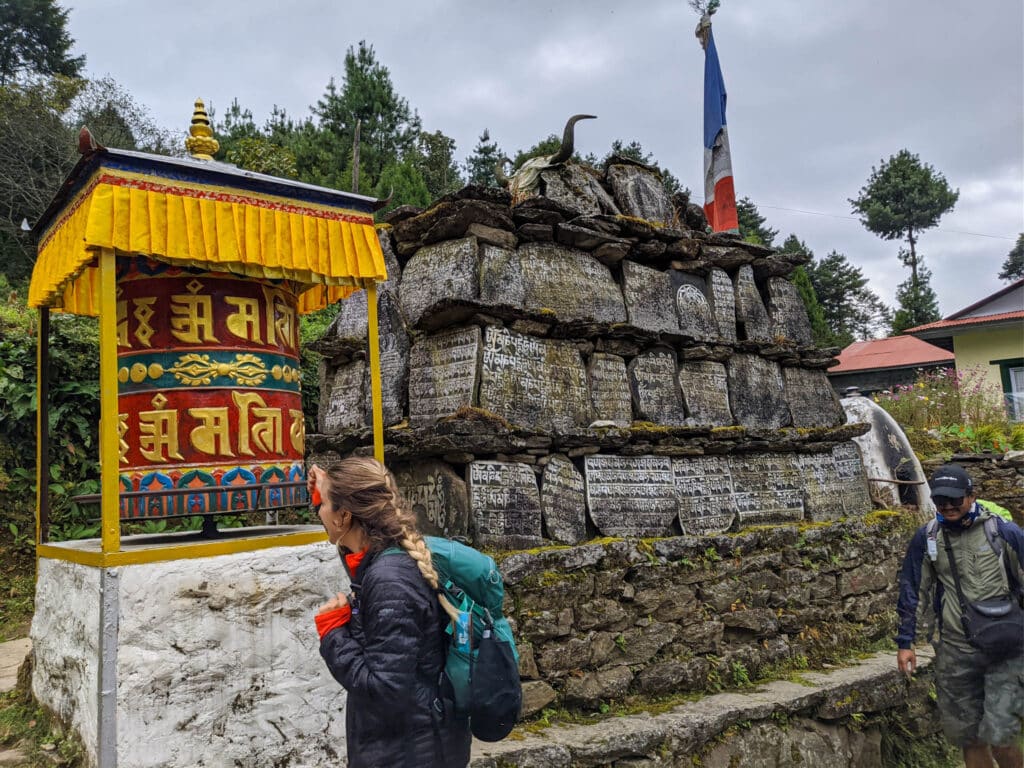
Everest Base Camp Porters
Porters are hired to carry trekkers’ items from one town to the next (up to 30kg). Typically, before a person can become a guide, they must first put in a certain number of hours as a porter. So hiring a porter can be helpful for the climbing economy.
That said, porters typically hike well ahead of the average trekker, and arrive at accommodations far in advance. If you run into trouble on the route, they will typically not be available to help.
Porters typically cost anywhere from $15-$25 USD per day. This does not include tip.
Can I trek to Everest Base Camp alone?
Absolutely. There were quite a few people along our route that were trekking solo or in pairs. The path, for the most part, is well marked – and you’ll typically see a lot of other trekkers along the way. That said, parts of the trek are very remote, particularly at higher altitudes. The chance of being lost or injured increases.
If you are embarking alone, make sure you have your route pre-planned, your accommodations and permits pre-booked, and a plan for what to do in the event that you get lost.
I recommend at the very least traveling with a local guide. When traveling alone, you miss out on the opportunity to learn about the local culture, history, language, and customs. Some of my favorite parts of the trek revolved around this learning, which I would have missed if I did not travel with a guide.
Where do you stay along the Everest Base Camp trek?
The Everest Base Camp trek is unique in that accommodations are readily available along the entire route. These accommodations are referred to as “tea houses”, which come equipped with beds, food and, occasionally, hot showers and wifi.
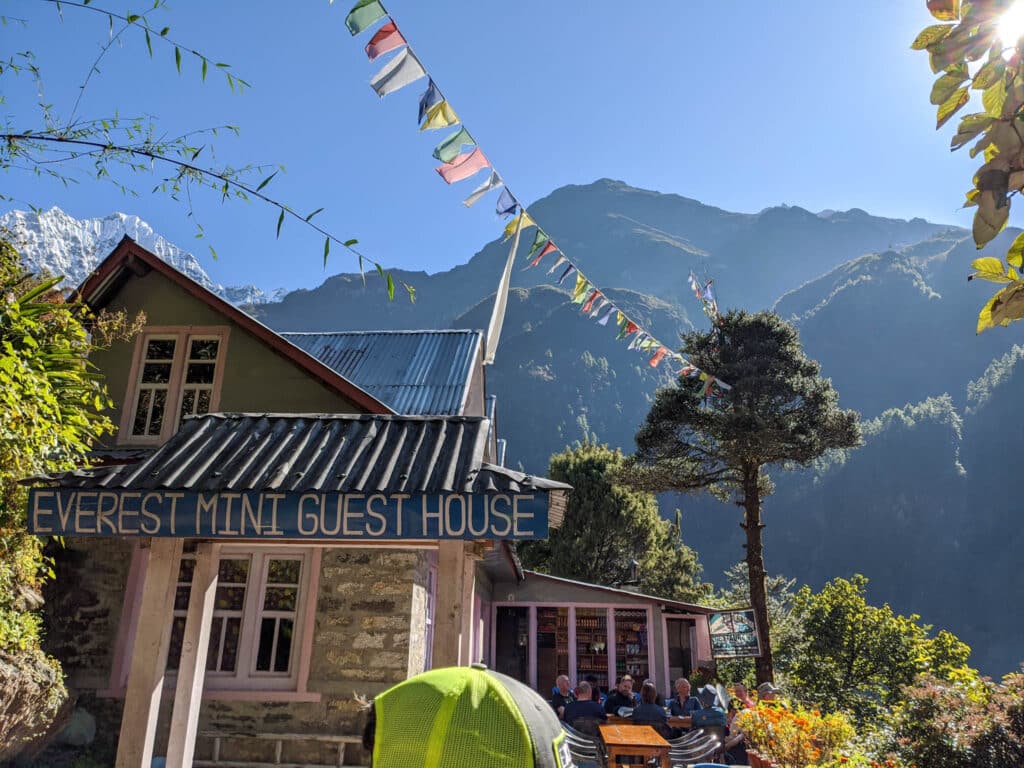
Tea houses typically have a “main room”, where guests can gather together for a meal, play games, or relax for the evening. This room contains an oven to provide heat. Guest rooms are notably not heated or insulated. So it is important to pack a sleeping bag for the night.
Tea houses range from $3-$6 USD per night. I found them immensely enjoyable!
If you are booking in the peak trekking season, you might consider researching and booking accommodation ahead of time. Tea houses can fill up quickly, particularly at higher altitudes. If you are booking during an offseason, you might have more luck finding accommodation along the way.
Can I shower in my accommodations?
Absolutely! A handful of accommodations along the route have showers that you can purchase to clean yourself up a bit. These showers are available at tea houses, and range from $4-$8 USD. At higher temperatures, pipes are likely to freeze at certain times of the year. You can request a bucket of hot water instead.
Keep in mind that temperatures can get very cold at higher altitudes, and there is not an easy way to dry off. If you have long hair, it may be wise to not wash it at higher altitude tea houses, as you run the risk of catching a cold.
Can I charge my electronics in the accommodations?
You sure can! A majority of tea houses offer both wifi and charging services. Note that in many accommodations, particularly at higher altitudes, you will have to pay a fee to do so. This fee can be anywhere from $1-$3 USD per hour.
What and where do you eat on the Everest Base Camp trek?
Where do you eat on the Everest Base Camp trek?
Tea houses! Pretty much every accommodation along the route also has a space for guests to eat. You’ll eat your meals in shared dining rooms with other trekkers. Eating a meal in a tea house can even reduce the cost of spending the night there to $1-$3 USD.
You do not need to pack your own food or camping cookware for this trek, though you may consider bringing along some power bars or snacks to eat along the trail.
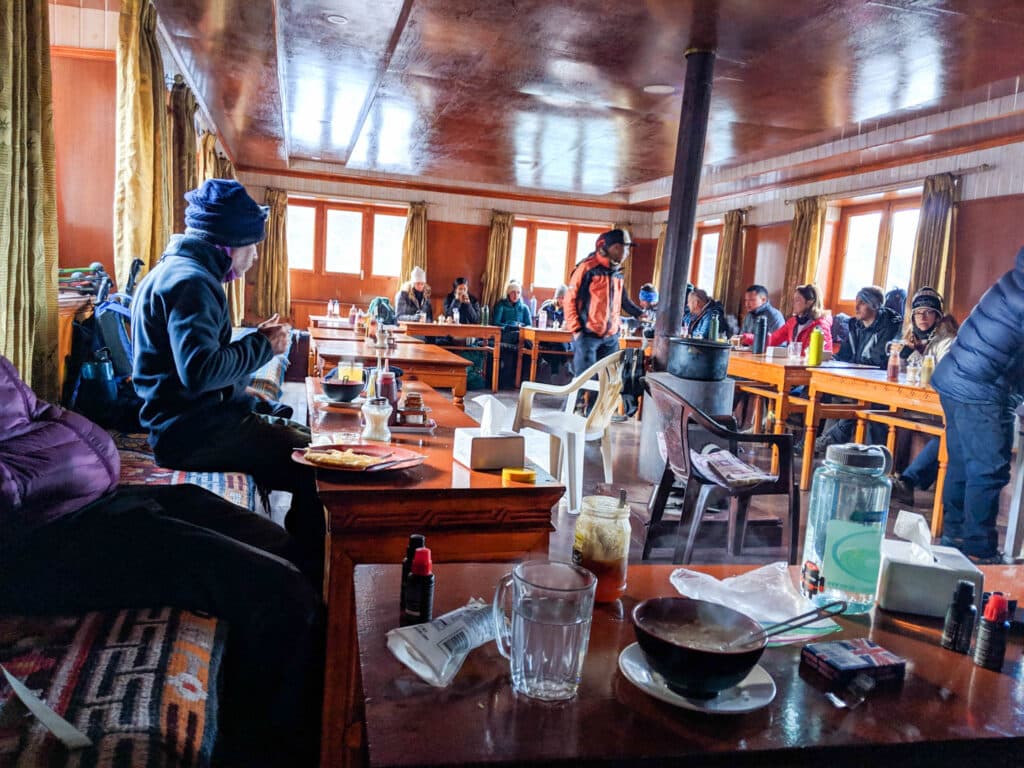
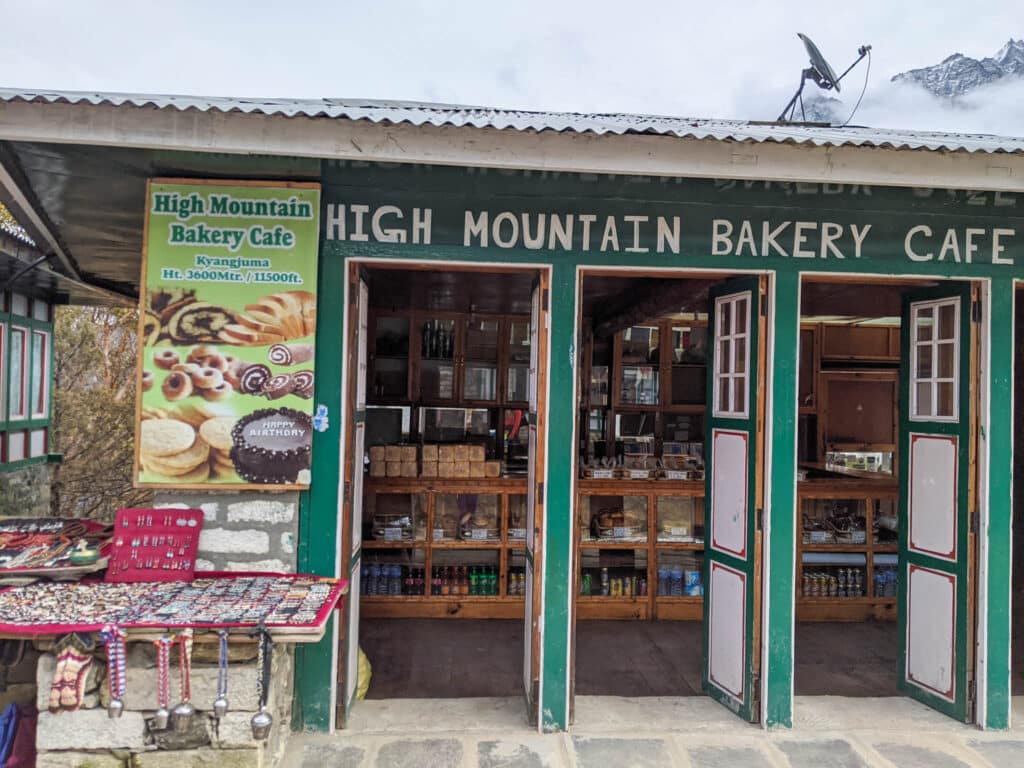
How much does food cost on the Everest Base Camp trek?
The typical cost of a meal is roughly $8USD. This cost tends to get more expensive at higher altitude, as all food items have to be trekked up by foot. You’ll also want to stop often for tea – which costs an additional $1-2USD. In total, you can budget around $20-$30USD per day for food.
While accommodation is included in most trekking packages, food is not. You’ll need to have enough cash on hand to pay for all of your meals along the route.
What types of food are available?
Along the trail, you’ll find traditional dishes like Dal Bhat (lentils and rice), Syakpa (Sherpa stew), and Momos (dumplings). You’ll also find items like pizza, spaghetti, and chocolate cake. I found the menus in tea houses to be extremely robust with a ton of variety.
Making sure you are consuming enough food and fluids during your trek is of utmost importance – as it can help ward off some of the impact of altitude sickness.
Check out my Everest Base Camp food guide for more!
Is the Everest Base Camp Trek worth it?
The answer to this question is a resounding YES. The trek to Everest Base Camp was one of the most challenging and rewarding experiences of my entire life. There were days where I had splitting headaches and hiked for hours on end with my eyes practically closed – and there was even one day that I wasn’t sure I would even make it.
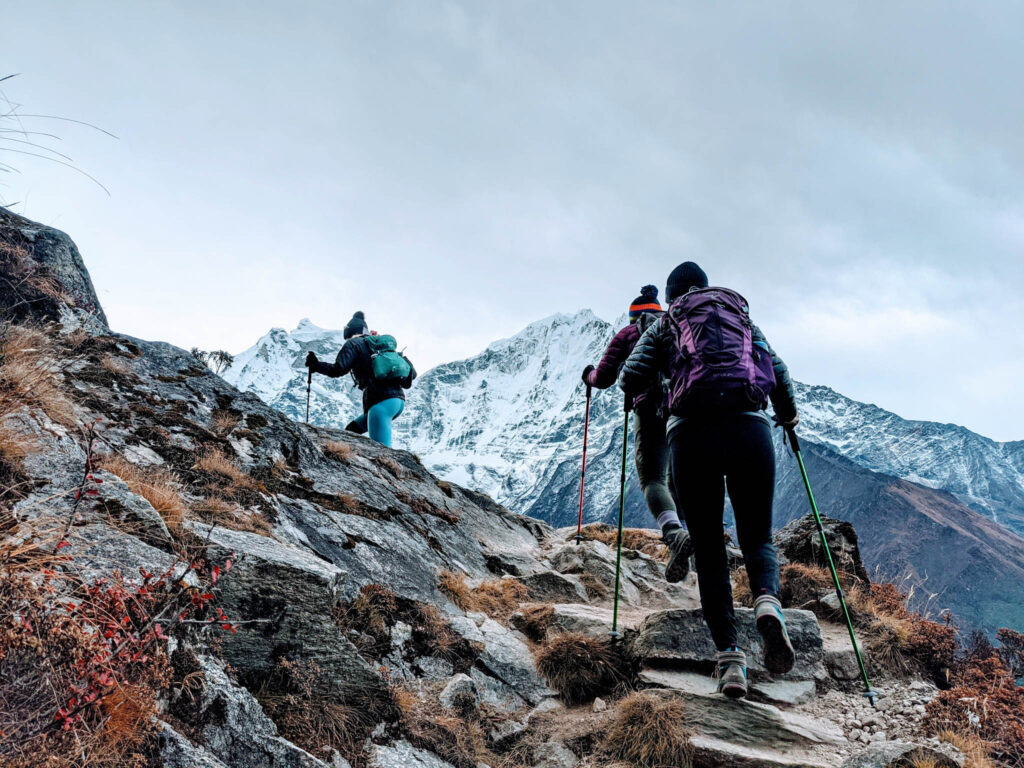
That said – the trek to Everest Base Camp is breathtaking (and not just because of the lack of oxygen). Throughout the trek, you will climb through lush forests decorated with prayer flags and filled with powerful waterfalls. You’ll cross over rickety swinging bridges that offer a panoramic view of the valleys below. Eventually, you’ll rise above the tree line, where you will trek across valleys surrounded by the tallest and most magnificent mountains in the world.
Even more magnificent than the natural beauty of the Himalayas was the lasting friendships formed throughout the trail. We met so many fascinating people along the route, and still have a WhatsApp group with our guides and group of four trekkers nearly three years after our adventure. Some of my favorite memories of the entire trail involved playing Uno after dinner in the dining rooms, exploring local towns together, and having a laugh around the communal tea house stove.
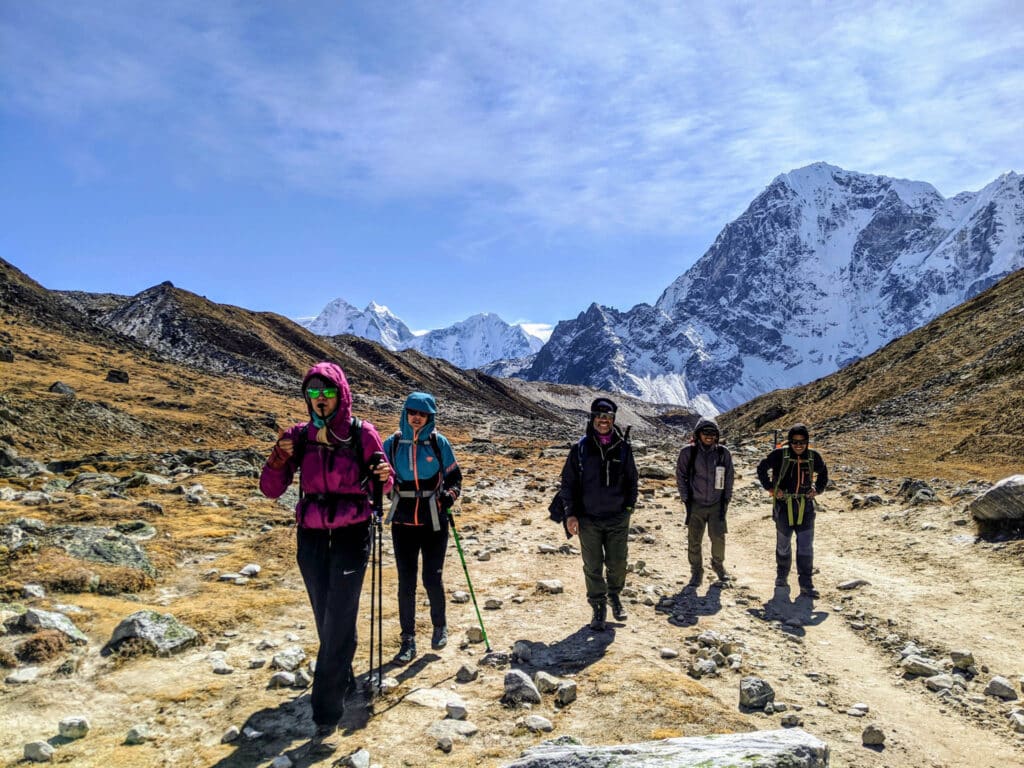
The trek to base camp is not about reaching your destination. It is about the journey itself. You learn so much about yourself on this trail, and grow in your own individual way. If you are on the fence about trekking to Everest Base Camp, I’ll leave you with two words of thought: “Just go”.
That’s all, folks!
Have you traveled to Everest Base Camp? Drop your favorite experiences in the comments below!
Check out the rest of my bucket list for more adventures!
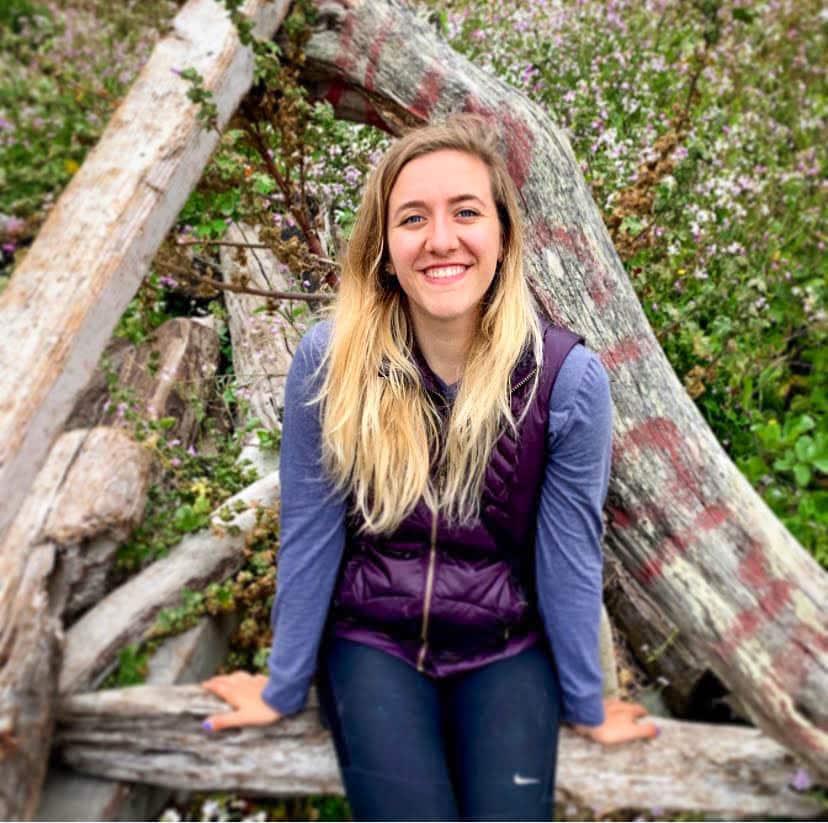
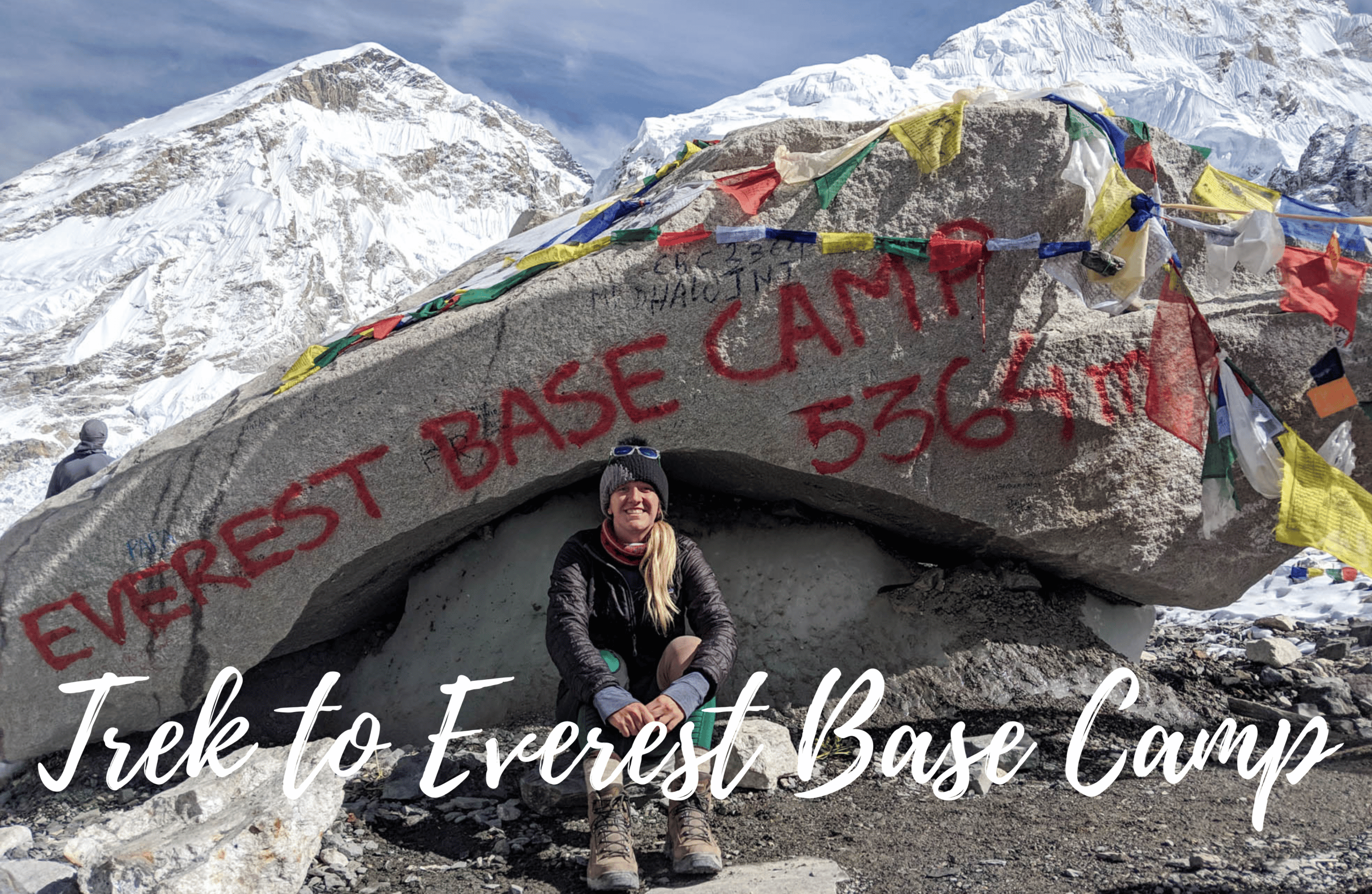
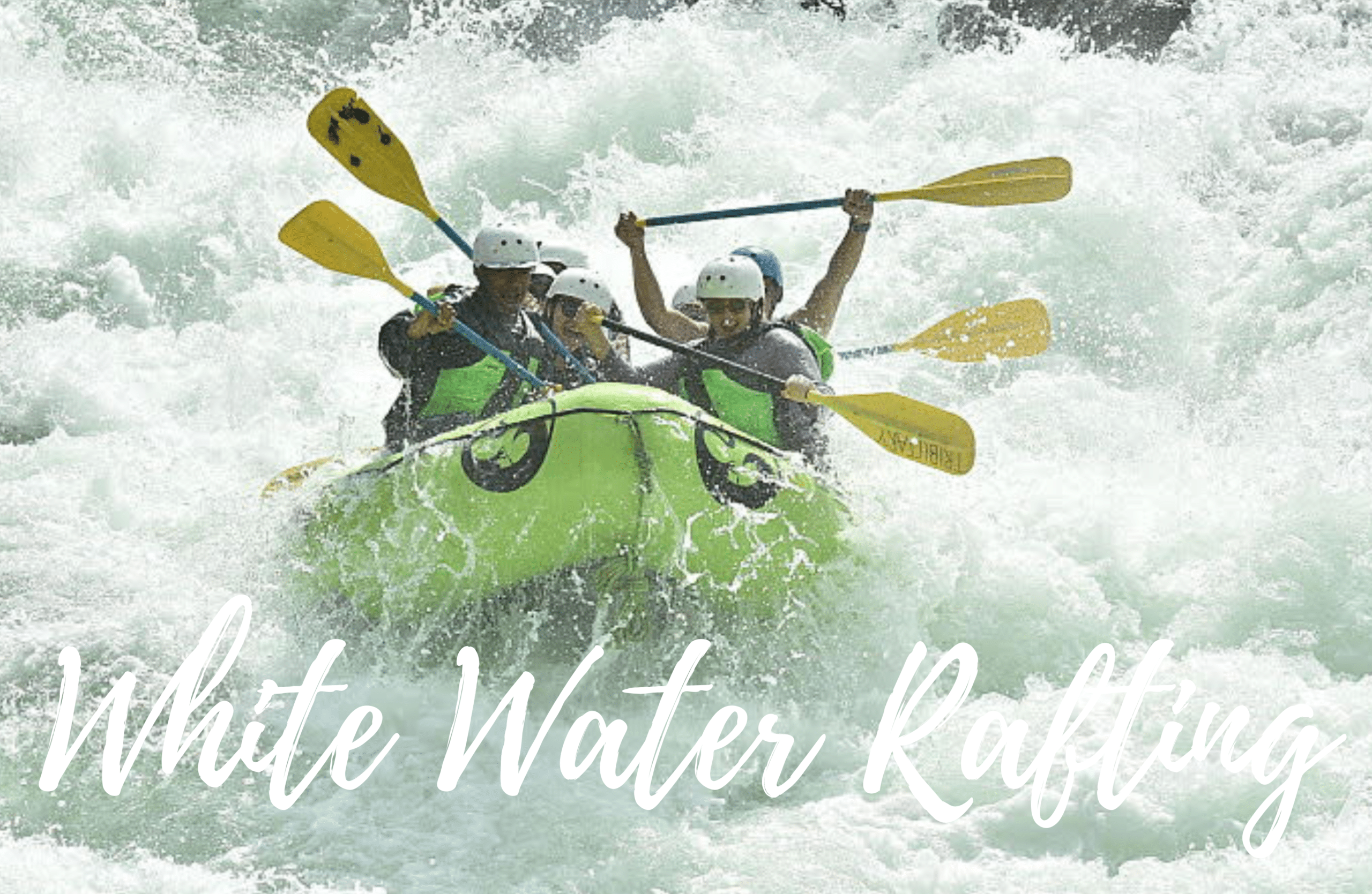
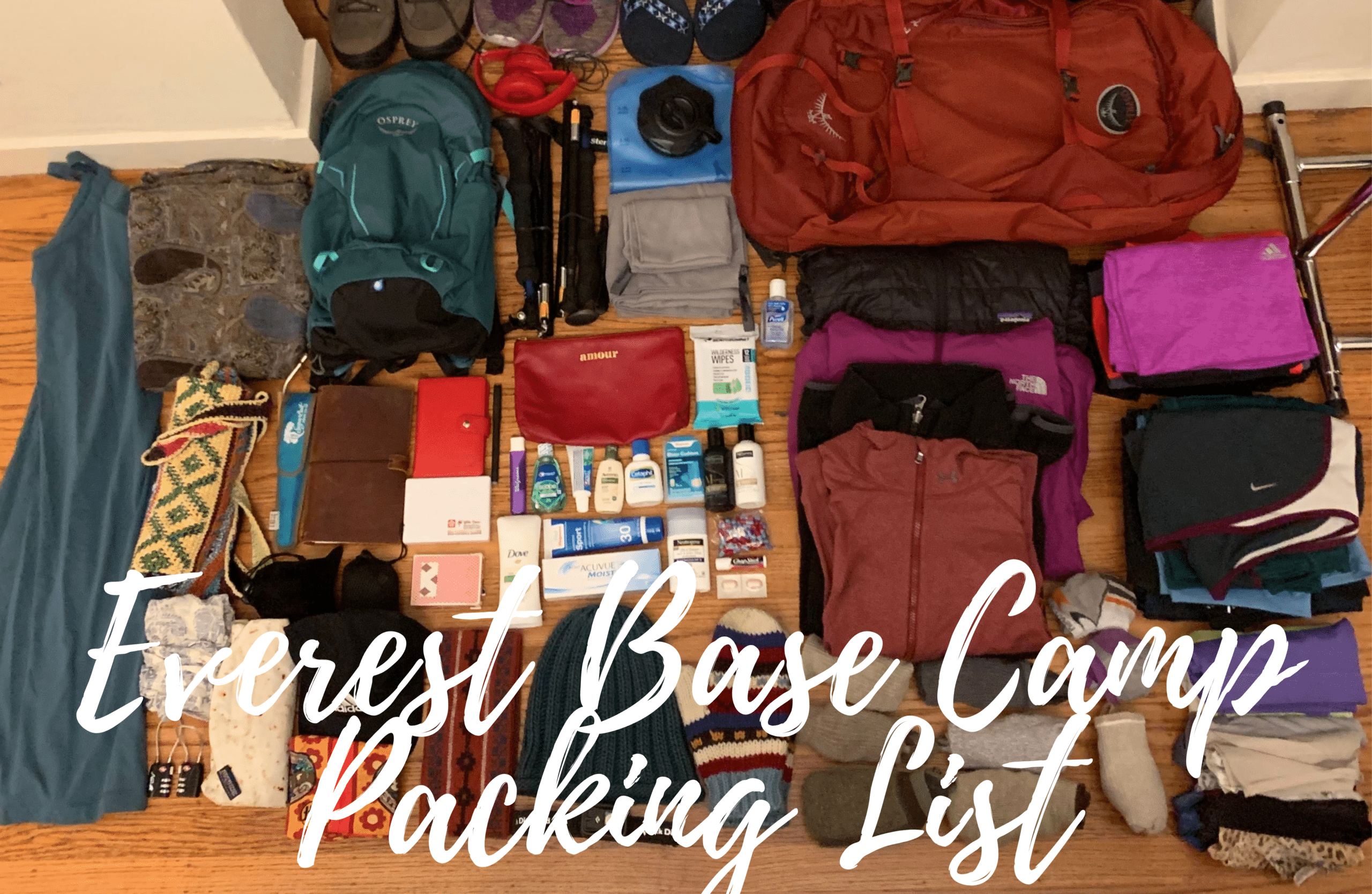
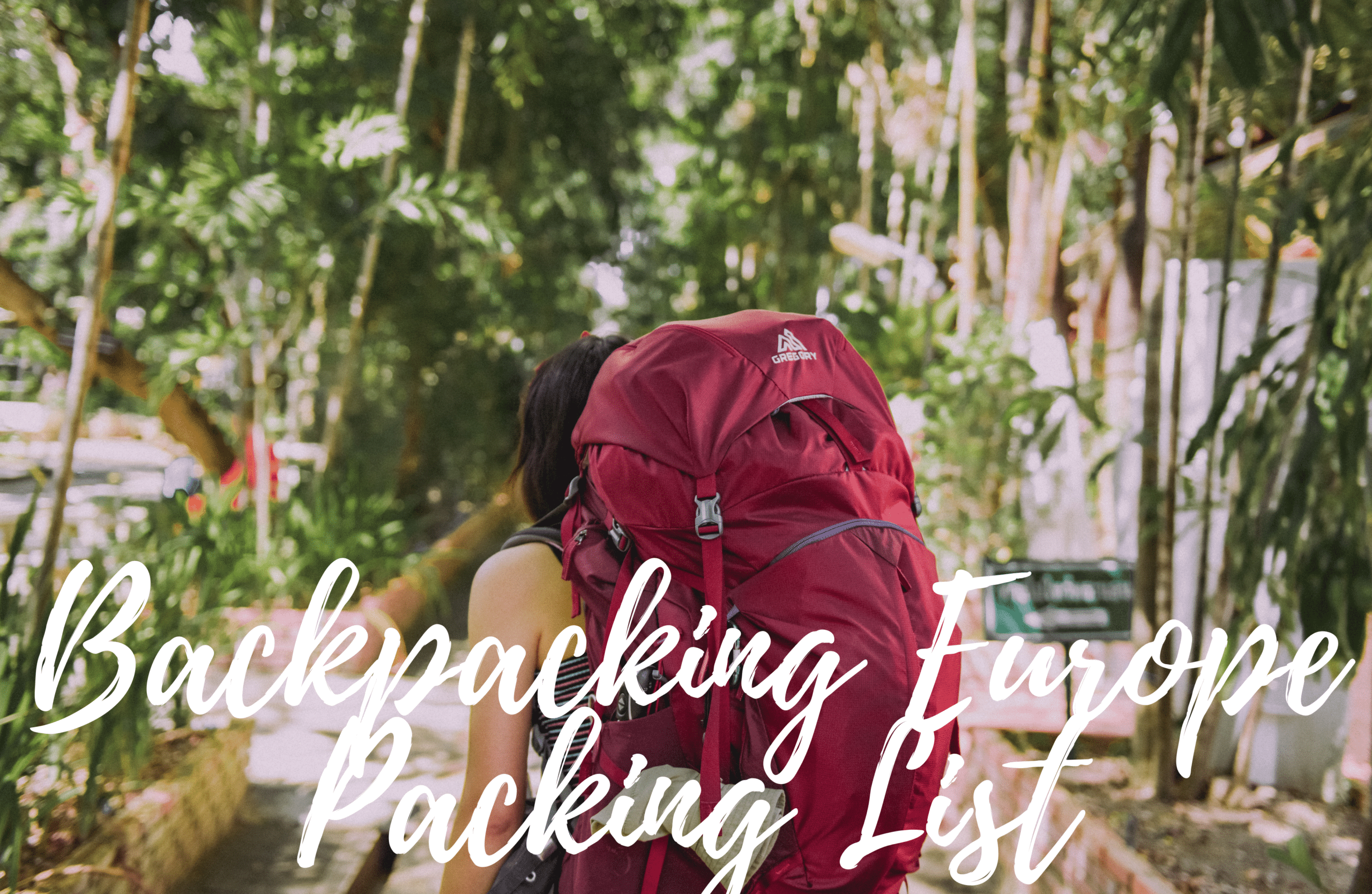

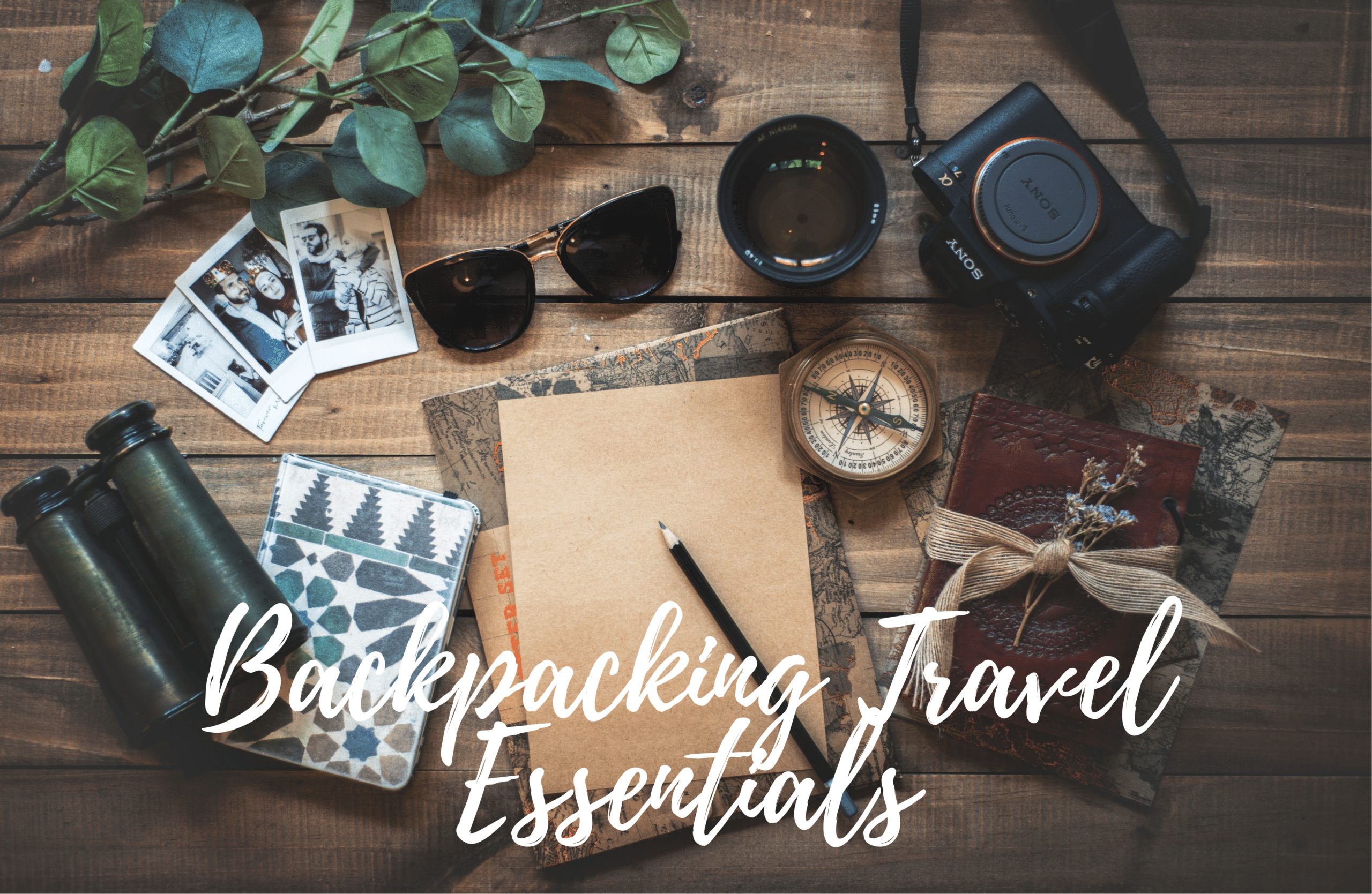

0